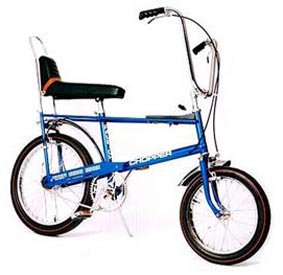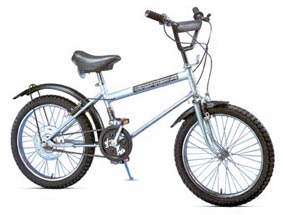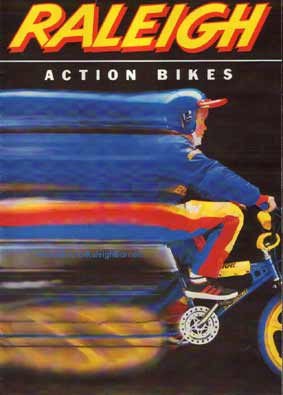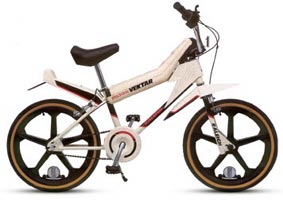The Chopper with its wedge-shaped frame, large back wheel and small front wheel, and its angular, aggressive-looking seat was an enormous success in Britain and America.

Tony Hadland, june 2000: The next follow-up to the Chopper was the Grifter, launched three years later, in June 1976. It resembled a BMX bike but with mudguards and a three-speed hub. The Grifter was originally developed not primarily as a Chopper replacement but to compete with BMX. However, the limited roadster-oriented technology at Nottingham meant that every joint of the Grifter’s frame would have to be brazed. Therefore, it could never compete with the welded frames being introduced in the US. However, as Chopper sales continued to slide, the Grifter was presented as the natural successor. It sold well.

Tony Hadland, june 2000: Raleigh was very late into BMX. The board was reluctant to introduce single-speed stripped down junior machines, as there was less profit in each compared with the Grifter, especially for Sturmey-Archer. They hoped BMX would be a passing fad. It was not and the company initially missed a big opportunity. There were consequently some high level sackings. The high street auto accessories and cycle chain store Halfords was meanwhile heavily and successfully promoting BMX. This followed a major initiative by their cycle marketing manager David Duffield (who had launched the Moulton and had later worked for Raleigh). Halfords, Raleigh’s biggest customer, had been involved in building the first BMX track in the UK and helping local authorities around the country set up their own tracks. As he could not source BMX bikes from Raleigh, he instead started importing from the USA. Therefore, Yvonne Rix was sent on a research trip to the USA. She came back with the Burner range, which was launched in 1982 and rapidly sold over a million units.

R6000.
Tested in BMX Plus! november 1983.
AERO BURNER.
Essai de l'Aero Pro Burner dans les pages du Bicross magazine #14 de novembre 1983.
1983 was Raleigh’s best year for sales in the UK, with almost a million units sold.
AERO PRO.
Le bond en avant. Choisis ton aeroburner, tu seras à la pointe du bicross.
Raleigh introduced another innovation - the Vektar. With "Star Wars" styling and "Knightrider" technology including a trip meter and FM radio with presets it becomes a "must-have" for the 80's cool kids.
Tony Hadland, june 2000: By 1985, Raleigh itself was suffering badly, as BMX rapidly died. Being essentially a bicycle designed for a seven-year-old but ridden by 7-17 year-olds, there was no moving up to bigger machines as riders grew. Everybody who wanted a Raleigh BMX bike bought it in the first two years. Thereafter Raleigh’s UK sales plummeted. By 1986, sales were 38% down on the 1983 peak.


Raleigh sees itself mainly as a maker of adult bikes and doesn't really want to bother going after the BMX and freestyle markets.